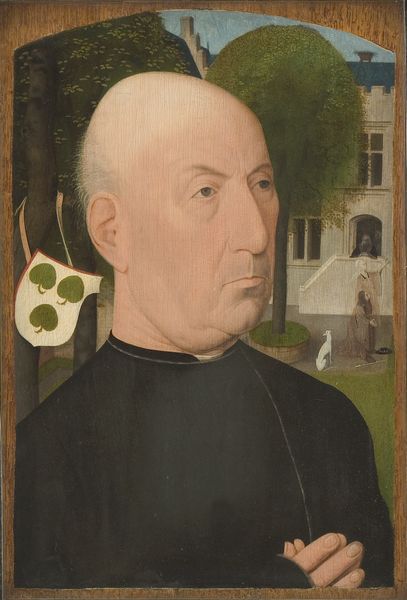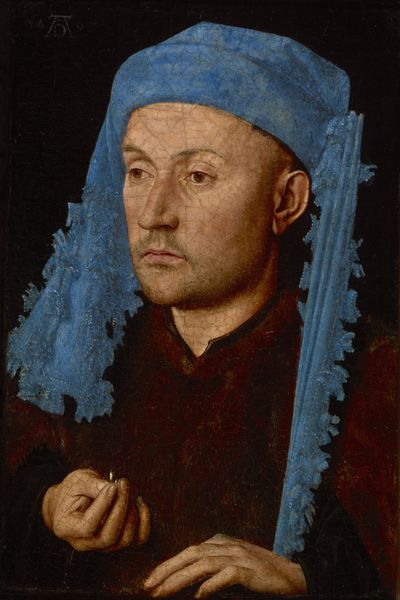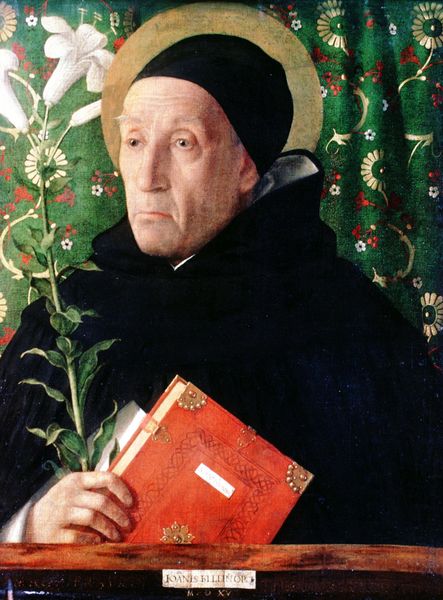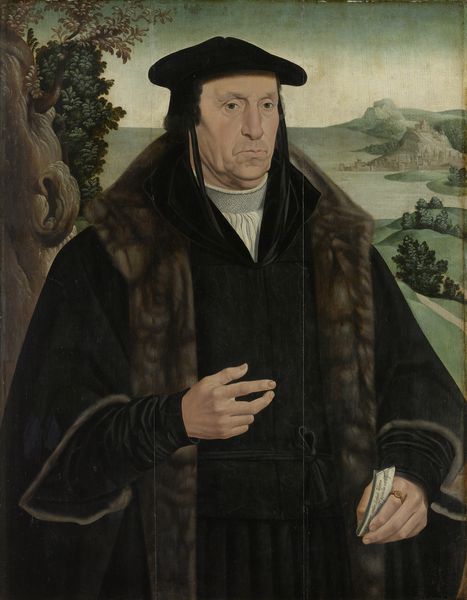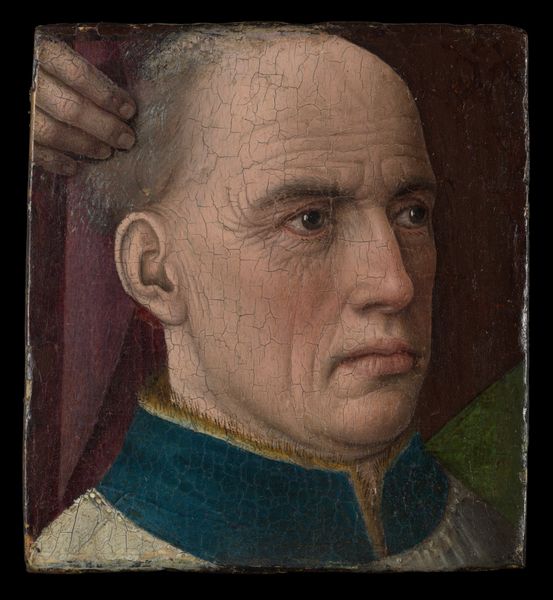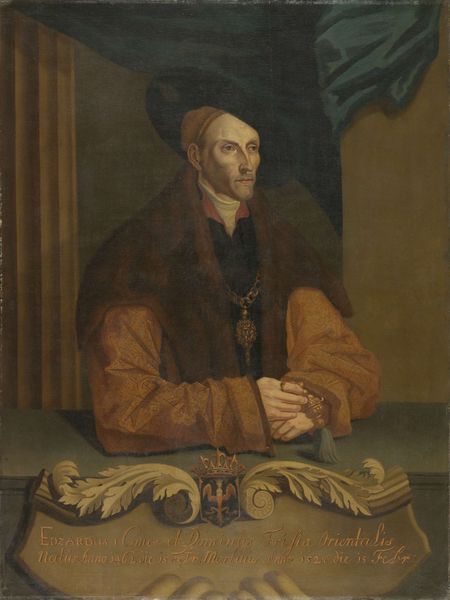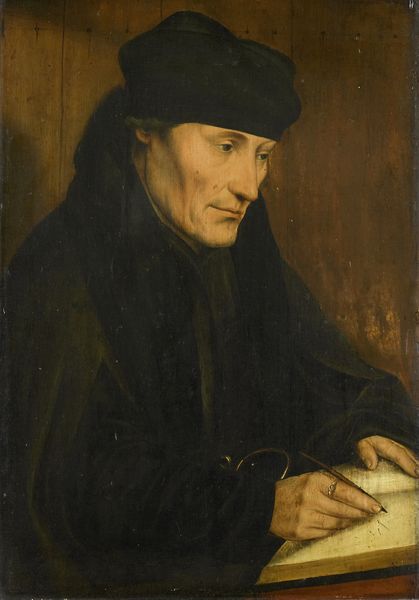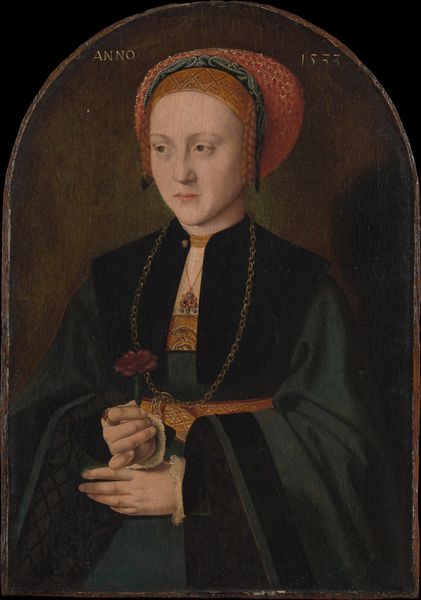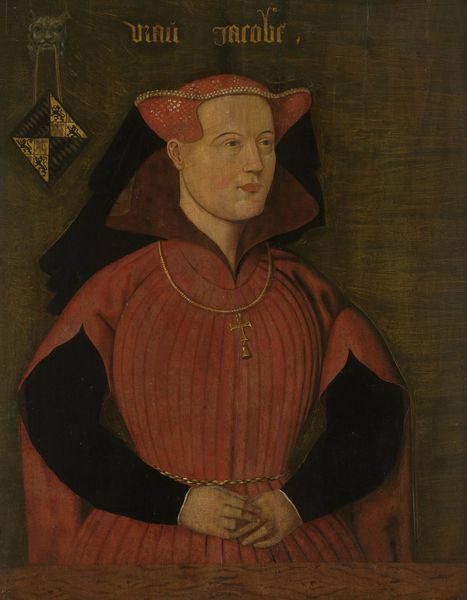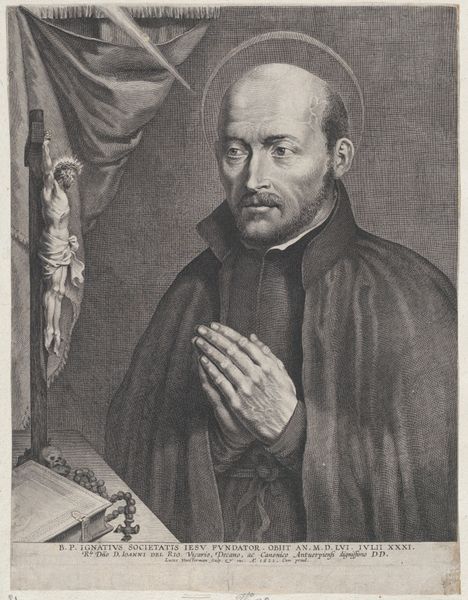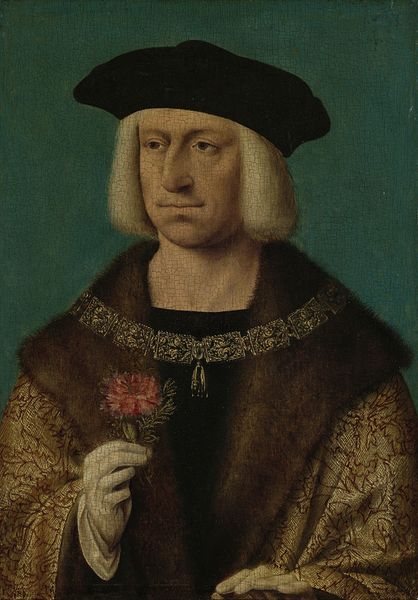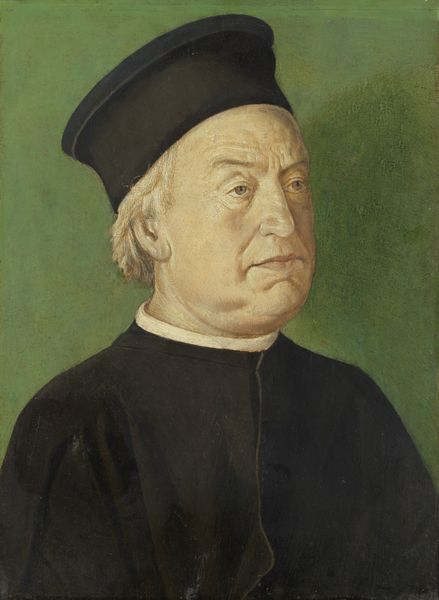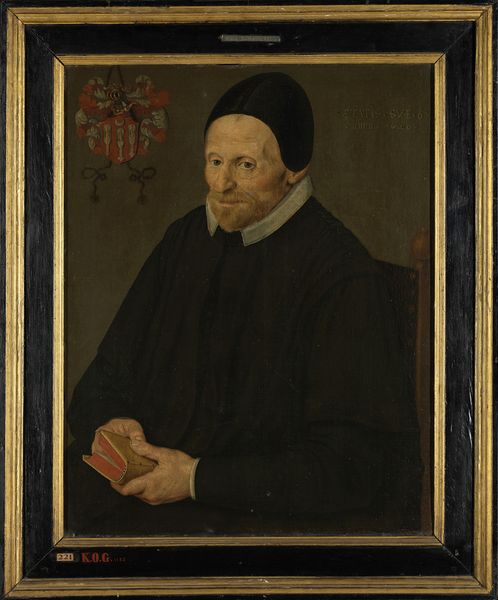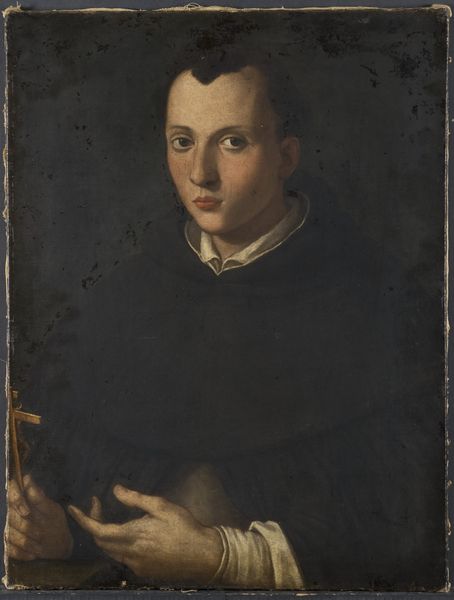
Portrait of Arent Franckensz van der Meer, Lord of Pendrecht, called Malicious Aertje c. 1550 - 1560
0:00
0:00
painting, oil-paint
#
portrait
#
medieval
#
painting
#
oil-paint
#
genre-painting
#
history-painting
#
northern-renaissance
#
academic-art
Dimensions: painted surface height 36.8 cm, painted surface width 25.5 cm, support height 43 cm, height 46.1 cm, support width 31.7 cm, depth 3.0 cm, depth 3.9 cm
Copyright: Rijks Museum: Open Domain
Curator: Welcome. Before us is a rather intriguing oil-on-panel portrait. It's believed to depict Arent Franckensz van der Meer, Lord of Pendrecht, a man also known as "Malicious Aertje." The piece dates from approximately 1550 to 1560 and comes to us from an anonymous artist, likely operating within the Northern Renaissance tradition. Editor: My first impression? The subdued palette—browns, blacks—lends the subject a certain severity. It creates a melancholic atmosphere. His gaze is averted, almost evasive. It does not come off as the look of "Malicious Aertje," but maybe someone who has gotten away with doing things? Curator: The limited color range definitely draws the eye directly to the sitter’s face. Note how the artist has skillfully captured the textures, from the fine fabric of his garment to the aged skin, employing subtle gradations of tone to define the contours and model the forms. Editor: The composition, too, is very telling. His hand tightly holds a small flower. He is wearing rings, including what looks like a signet ring with an engraved coat of arms that are very distinct, and we know what "Malicious Aertje" looks like on canvas. All things put together gives the portrait, which might have been a commission, a symbolic message of power, status, and personal identity during this period. Curator: Indeed. The Northern Renaissance emphasis on detail also comes into play when observing the rather somber yet almost tender expression, seemingly a subtle yet crucial indicator of his psychological interior. It avoids idealization to convey, instead, individual humanity. What are we to make of it, editor? The artist provides ample visual material to ponder meaning. Editor: I find myself still drawn to how societal status can be read in details. Here we witness how such depictions become important displays of class and self-image, reflecting societal and individual identities shaped by a complex network of personal attributes. It is interesting to reflect how that status is interpreted today. Curator: A keen reading through the semiotic components of his clothes and ring combined. Ultimately this engagement reveals a narrative woven into the materiality of the artwork itself. Editor: Yes, and such examination proves invaluable to better comprehend how these figures from the past perceived themselves in their socio-historical reality. Thank you!
Comments
No comments
Be the first to comment and join the conversation on the ultimate creative platform.
